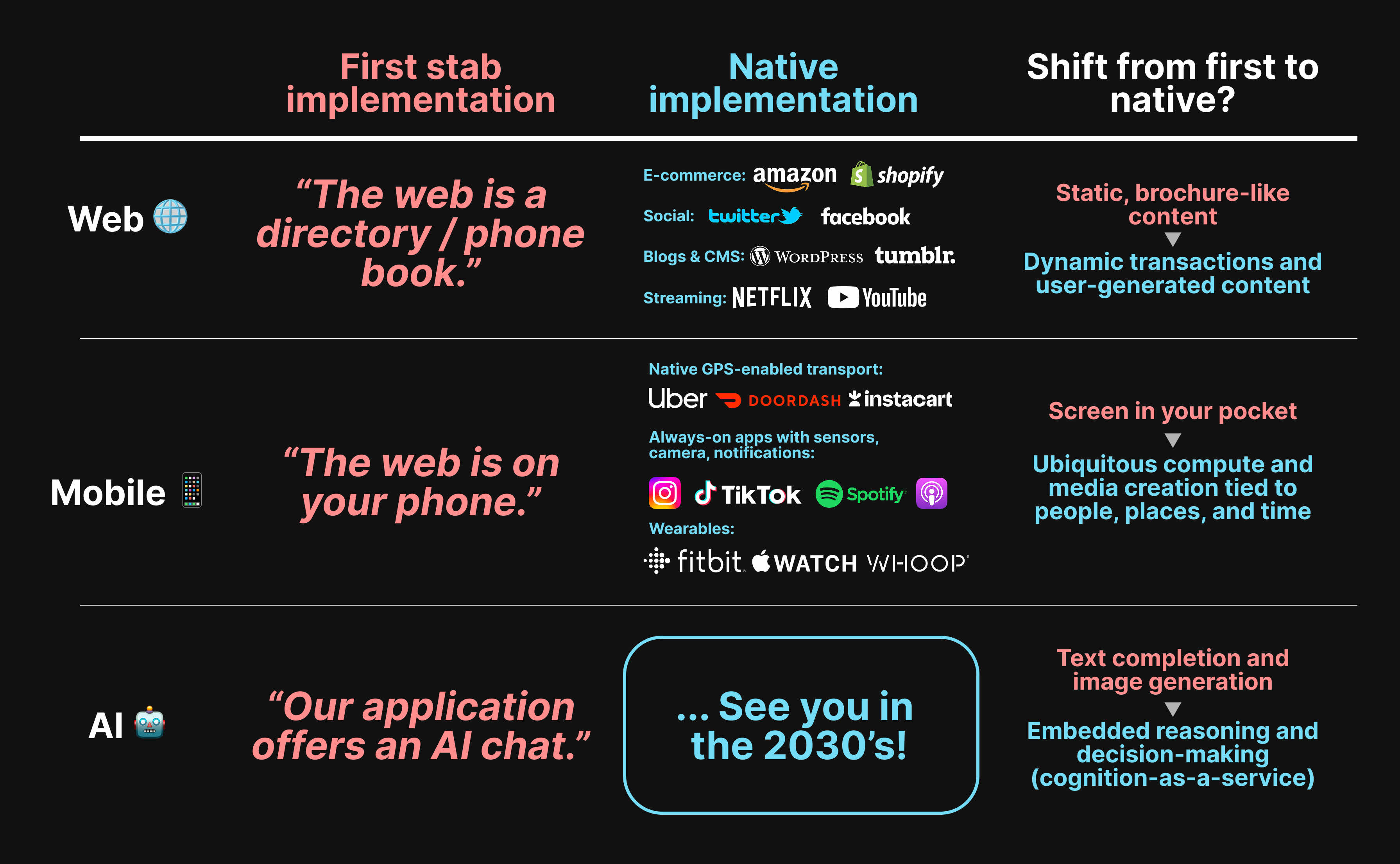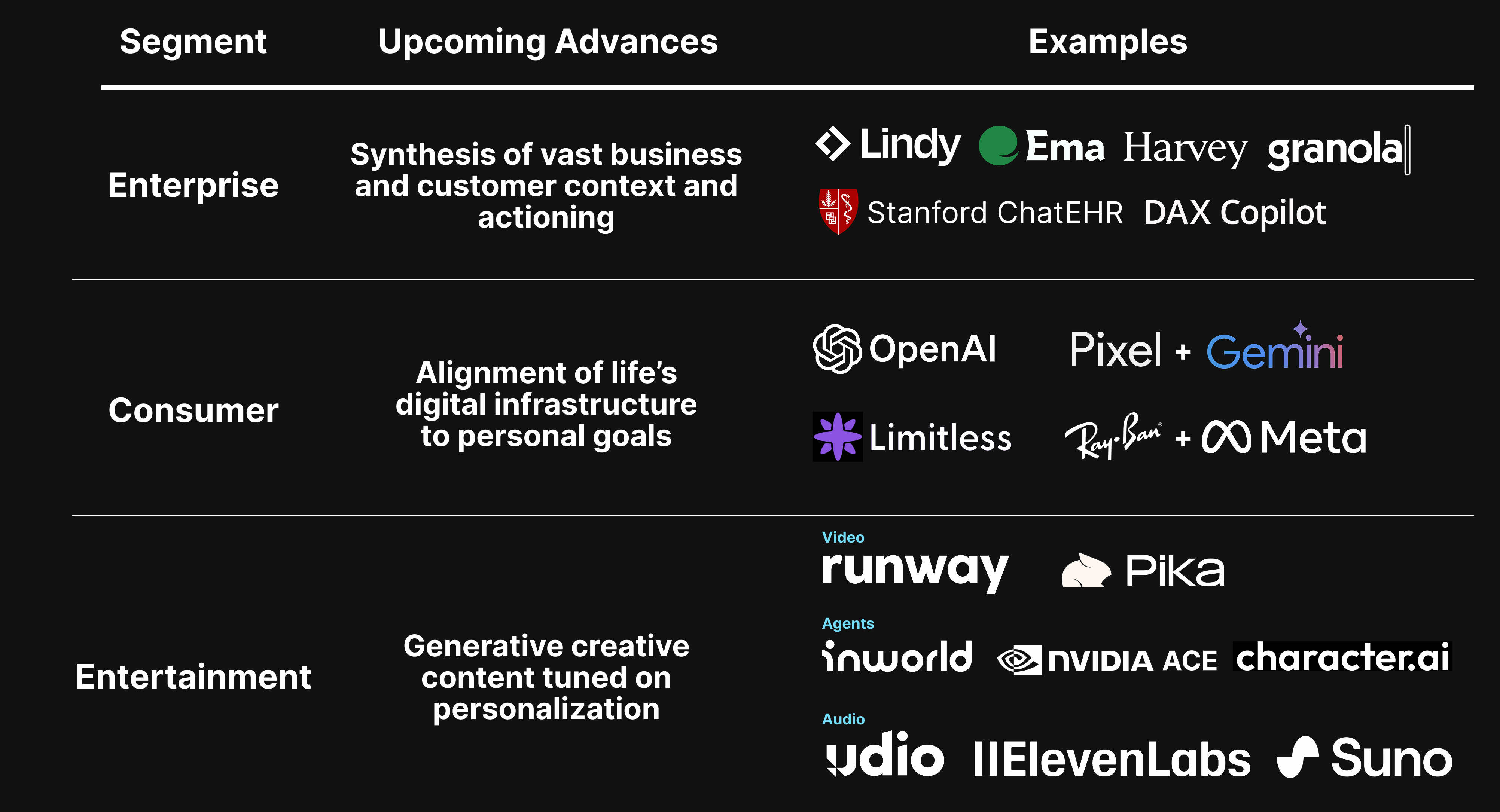Disclaimer: This represents personal observations regarding AI progression and discourse, and does not reflect my employer’s views or opinions.
I have spent my career in technology and more recently working directly on AI solutions. My friends in other fields - law, finance, medicine, government, non-profits - have asked some form of “Dan you work in this space. How is AI going to show up in my life?” For people outside the tech bubble (and even those within!) it’s hard to speculate what the next decade might look like.
Some of the confusion stems from lofty pictures painted by top AI labs. Sam Altman of OpenAI wrote, “the takeoff has started. Humanity is close to building digital superintelligence.” Dario Amodei of Anthropic suggested AI could spike unemployment to 10 - 20% in the next five years. These kinds of statements are hard to square with the reality of how long it takes technology to diffuse through the economy and manifest in everyday life. They’re too abstract to understand the incremental steps AI will take between today’s “autocomplete” and tomorrow’s future Jarvis-style mega-assistant.
Looking backward offers forward guidance

A better way to think about AI’s trajectory is to look backward at how previous information technology waves reshaped society from breakout moments to mature implementations. The web began as digital brochures before giving rise to native experiences like e-commerce, blogs, and social platforms. Mobile started as “the web on your phone” before spawning native apps reliant on ubiquitous hardware in our pockets. Each transformation followed a similar pattern: a breakthrough moment, a decade or more of gestation, and then the rise of truly “native” applications that could not have existed before. I suspect AI will rhyme with these earlier shifts more than it will break into an entirely new song.
Diffusion takes time
Taking these previous transitions as a guide, there is a ~10-year progression between a breakthrough information technology and the arrival of a wave of businesses that feel truly “native” to it.
In the realm of the internet, Mosaic and Netscape opened up the consumer web in 1993–1994. But most of the companies that defined the web-native era came much later: Google went public in 2004 after becoming the dominant search and ads business, and Facebook didn’t IPO until 2012, cementing the global scale of social networking. Roughly a decade or more separated the arrival of the web from the public-market validation of its most iconic, native business models.
Mobile followed the same arc. The iPhone launched in 2007, the App Store followed in 2008. Android shipped the same year. But it wasn’t until the mid-2010s that we saw true mobile-native IPOs: examples like Square (2015), Snap (2017), Lyft and Uber (2019), DoorDash (2020), and Instacart (2023). These were not “web pages on a phone,” but companies whose entire existence depended on sensors, GPS, connectivity, and ubiquitous computing. Again, the lag was about 10 years.
If late 2022 was AI’s equivalent of the iPhone launch moment, we may not see truly “AI native” companies go public until the early-to-mid 2030s. That time horizon might feel slow compared to the daily hype cycle, but it reflects the messy reality of diffusion: technology must be absorbed into business processes, consumer behavior, and cultural norms before the “native” layer emerges.
What will AI-Native Look like?
This is a post unto itself, so I’ll offer some brief, starter thoughts. If “web native” meant transactional websites and social platforms, and “mobile native” meant location-aware, always-on applications, then “AI native” will encompass more than just chatbots bolted onto existing products. The shift will be from autocomplete to embedded cognition-as-a-service that reason, decide, and act within experiences and workflows.

On the enterprise side, AI-native solutions will synthesize vast material for actionability: like generating a briefing of all client interactions before a sales call, or summarizing a patient history before a doctor check-in (and an after-visit summary). Consumer solutions will follow-suit, as AI’s orchestrate our life’s digital infrastructure across communication (phone, text, email), events (calendars, planning), budget & finances, health and wellness (wearables and fitness trackers) to maximize life goals like getting healthier, taking up a new hobby, spending more time with family, saving up for big purchases, advancing your career and so on. Entertainment will both become more expansive (imagine a GTA VI on steroids, expanded into infinitum using LLM’s to generate endless content and scenarios) and personalized (imagine dynamically generated shows and ads trained on your interests).
“This time feels different!”
I have seen this caveat: “this time feels different!” suggesting that superintelligence will explode onto the scene and change everything overnight in a promethean moment. But history suggests a slower, more familiar rhythm as businesses, societies, and indeed humans play catch-up as we graft a new paradigm onto our collective operating system. This is not to underplay how transformative AI will be (I can’t imagine my life without the internet or my mobile phone, both of which I use thousands of times a day), but instead to encourage us to be on the lookout for the incremental opportunities for AI to creep into our lives and compound over time. That is how “AI native” will arrive - not with a single breakthrough moment, but with a thousand incremental steps that, in hindsight, make the future feel inevitable.
Thanks Bill Palombi, Danny Delaney, and Brice Morrison for helping me frame my thoughts for this post!



